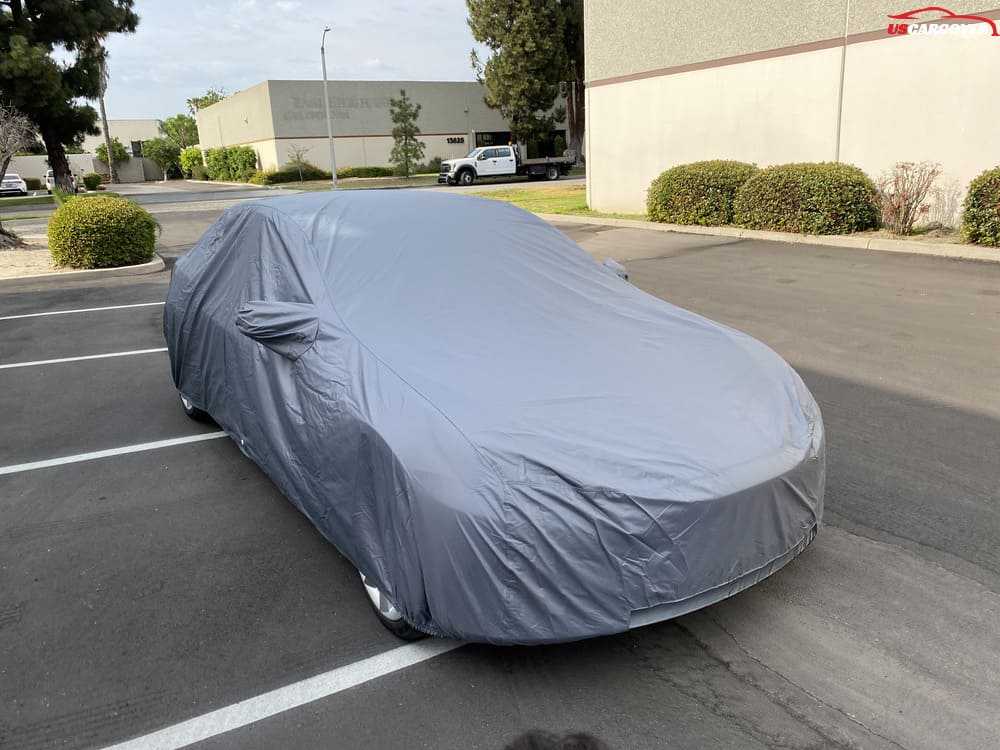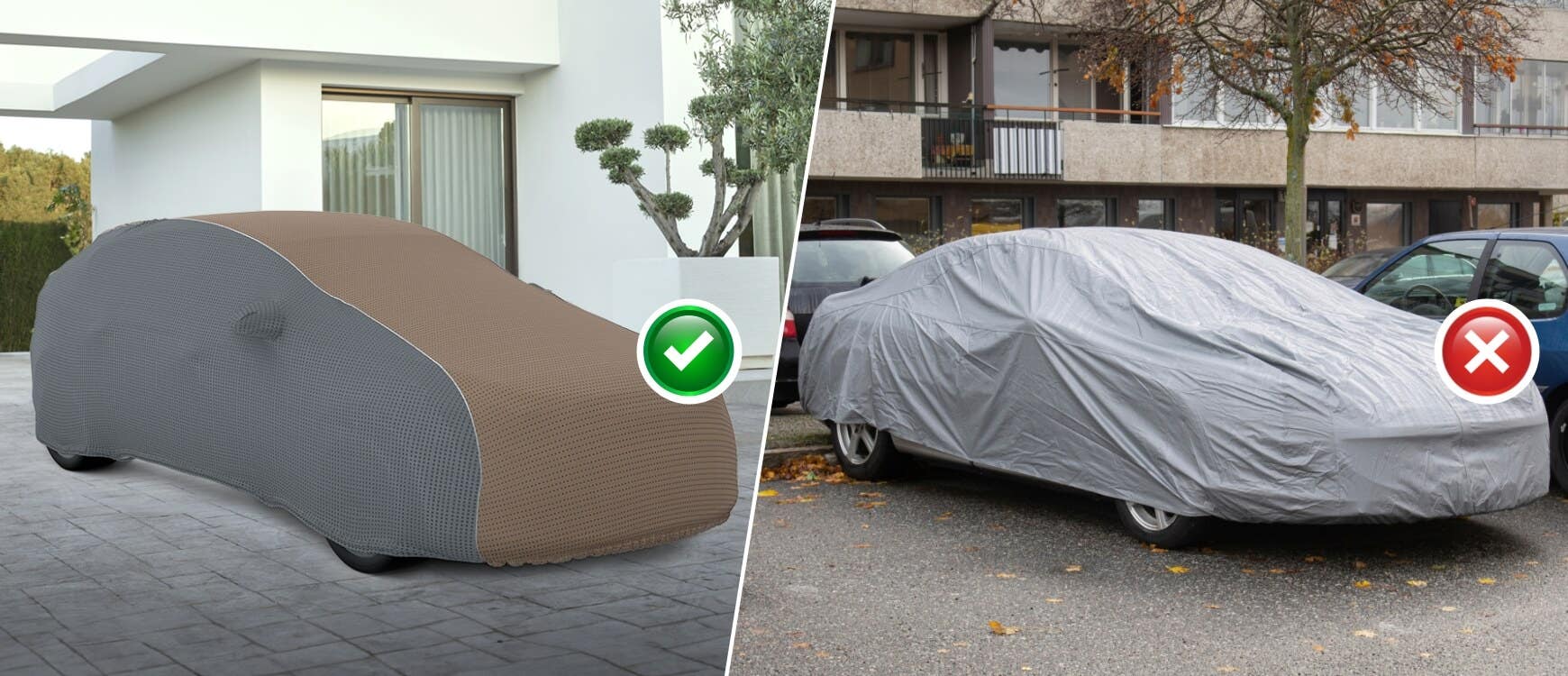Choosing the right car cover might seem like a simple task, but with so many options available, it can quickly become overwhelming. You want to protect your vehicle from dust, weather, and scratches, but how do you know which cover is the best fit for your needs?
Making the wrong choice could leave your car vulnerable or even cause damage. Imagine your car, snug and secure, shielded from the elements and looking as pristine as the day you bought it. That’s the peace of mind the right car cover can bring.
We’ll guide you through the key factors to consider when selecting a car cover, ensuring you make a decision you won’t regret. Whether you’re protecting a cherished classic or your everyday ride, we’ve got you covered. Keep reading to discover the secrets to choosing the perfect car cover for your beloved vehicle.
Types Of Car Covers
Finding the perfect car cover involves understanding different types. Indoor covers shield from dust and dirt. Outdoor covers protect against rain and sun. Custom-fit covers ensure snug protection. Consider material and climate for the best choice.
Indoor Vs. Outdoor
Indoor car coversare soft and made for inside use. They protect cars from dust. These covers are not waterproof. Outdoor car coversare tougher and protect from rain and sun. They are also great for snow and wind. Choose the right cover for where your car stays most. Indoor for garage. Outdoor for driveway.
Custom-fit Vs. Universal
Custom-fit car coversfit your car perfectly. They are made for the exact model. These covers hug every curve and line. They are great for full protection. Universal car coversfit many cars. They are not made for one model. They are cheaper and easy to use. Choose custom-fit for better protection. Universal is good for saving money.
Material Considerations
Breathable fabrics help keep moisture away. They allow air to flow freely. This stops mold and mildew from growing. Cotton and polyester are top choices. These fabrics are light and easy to handle. They are also gentle on your car’s paint.
Rain can damage your car. Waterproof materials protect against rain and snow. They keep your car dry and clean. Nylon and polyethylene are common waterproof choices. These materials are strong and durable. They shield your car from bad weather.
Sunlight can fade your car’s color. UV protection is important. It keeps your car looking new. Polyurethane and acrylic offer great UV protection. They block harmful sun rays. These materials are long-lasting and reliable.
Climate And Weather Factors
Cars need extra care in rainy areas. Water can damage car paint. A waterproof car cover is a good choice. It keeps the car dry. It also stops rust from forming. Look for covers with breathable material. This helps to stop mold.
The sun can be harsh on cars. It fades car color. A UV-resistant cover is the best option. It protects the car from the sun’s rays. Heat can crack the dashboard. A cover also keeps the car cool inside. This protects the seats from heat damage.
Snow and ice can harm cars. A thick car cover is needed. It shields the car from snow. It also stops ice from forming on windows. Choose a cover that is insulated. It will keep the car warm. This helps the engine start easily.

Credit: uscarcover.com
Size And Fit
Measuring your vehicleis important. Use a tape measure. Start from one end. Measure to the other end. Check width and height too. Write down these numbers. Compare with cover sizes. This helps find the right fit.
Some covers come with adjustable features. These help fit different cars. Look for elastic hems. They stretch to fit. Some have straps. These keep the cover tight. Check for buckle closures. They hold the cover in place.
Additional Features
Security optionsare important for keeping your car safe. Some car covers have locks or straps. These prevent thieves from taking your cover. Others have alarms. Alarms alert you if someone tries to remove the cover. Choose features that make you feel safe. Also, check if the cover has reflective strips. These strips help at night. They make your car visible. This can prevent accidents. Security features give peace of mind.
Ease Of Use
Consider how easy it is to use the car cover. Some covers have zippers or Velcro. These make it simple to put on or take off. Lightweight covers are easier to handle. Heavy covers might need more effort. Check if the cover folds easily. Folding helps in storing. Also, see if the cover is machine washable. This keeps it clean without hassle. Easy-to-use covers save time and energy.

Credit: www.coversandall.com
Budget Considerations
Choosing a car cover involves budget considerations. Evaluate your spending limit and compare quality versus price. Opt for affordable options that still offer protection against weather elements.
Cost Vs. Durability
Choosing a car cover can be tricky. Balancing costand durabilityis key. Cheaper covers might not last long. They can wear out quickly. More expensive covers often last longer. They offer better protection. Spending more now can save money later. Think about the weather in your area. Harsh weather needs stronger covers. A durable cover protects better in storms. It is worth the extra cost.
Long-term Investment
A good cover is a smart buy. It keeps your car safe. It reduces damage and keeps your car clean. This means less washing. Less washing saves money. A strong cover also prevents rust. No rust means your car looks better longer. That helps keep its value high. Investing in a quality cover pays off. It protects your car for years. Choose wisely for lasting benefits.
Maintenance And Care
Keep your car cover clean for better protection. Use a soft brush to remove dirt. Avoid harsh chemicals. They can damage the cover. Mild soap and water work best. Rinse well after washing. Let it air dry completely. Never use a dryer. Heat can shrink the fabric. Clean your cover every few months.
Store your cover in a dry place. Avoid damp areas. Moisture can cause mold. Use a storage bag if possible. This keeps it safe from dust. Fold neatly to avoid creases. Keep away from sharp objects. They can tear the fabric. Always store in a cool place.

Credit: www.coversandall.com
Frequently Asked Questions
What Factors Determine The Best Car Cover?
Choosing a car cover depends on factors like climate, material, and fit. For harsh weather, opt for heavy-duty materials. Indoor storage requires dust-resistant covers. Ensure the cover fits your car model snugly. These considerations protect your car from elements and ensure longevity.
How Does Climate Affect Car Cover Choice?
Climate significantly impacts car cover selection. In rainy areas, waterproof covers are essential. For sunny regions, UV-resistant materials are crucial. In snowy climates, choose covers that are durable and can handle heavy snow. The right cover protects your vehicle in any weather condition.
Are Custom Car Covers Better Than Universal Ones?
Custom car covers provide a better fit, offering enhanced protection. They are tailored to your vehicle’s dimensions, preventing wind flapping and moisture buildup. Universal covers, while cheaper, may not fit as snugly. A proper fit ensures your car’s finish remains pristine and protected from elements.
Can A Car Cover Prevent Theft?
While not foolproof, a car cover can deter theft by concealing your vehicle. Thieves often target easily accessible cars. A cover adds a layer of inconvenience, potentially causing them to move on. For added security, consider covers with lockable hems or integrated alarms.
Conclusion
Choosing the right car cover protects your vehicle from damage. Consider your car’s size and the climate in your area. Check material quality for durability and protection. Look for features like UV protection and waterproofing. Think about the ease of use and storage options.
A good fit prevents dust and scratches. Invest in a cover that suits your needs and budget. This decision keeps your car safe and looking new. Remember, a well-chosen cover saves money in repairs. Happy driving with peace of mind!
Hi I am Tamim Hasan, I am a normal person. I like to help people so I want to help you through the blog website. If anyone is benefiting through this blog website then you can help me by sharing comments.




